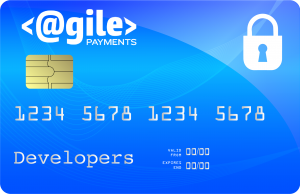 For a business owner, selecting the best and most cost-effective method of accepting customer payments can be confusing and overwhelming, particularly as the range of payment options continues to grow.
For a business owner, selecting the best and most cost-effective method of accepting customer payments can be confusing and overwhelming, particularly as the range of payment options continues to grow.
A payment aggregation solution offers a platform the ability to act as a master merchant and instantly onboard application sub-users. These users can complete a simple form and in minutes begin accepting payments.
Let’s assume Bob owns a small but popular jewelry store that does a lot of business through its website. Choosing the right electronic payment method can affect Bob’s profit margin, the amount of time and effort he needs to invest in processing payments, and his valued customers’ experience. Understandably, Bob takes his time to research this important decision, but he’s getting in over his head.
Let’s help Bob out.
What is an ACH Aggregator?
An ACH Aggregator, or payment facilitator (PayFac), allows one master merchant to easily accept payments from the end customer. Historically, payment aggregators have been focused on helping merchants process credit-card transactions. But these days, ACH transactions are becoming increasingly common in the aggregation space as merchants want the ability to process check payments electronically.
There are two primary types of payment aggregators: First, the “super aggregators,” PayPal and Stripe certainly qualify. Both of these providers could very quickly enable Bob to accept credit card payments. He would simply need to create an account with one of those companies and integrate the provided credentials into his online storefront shopping-cart solution. This option is appealing to business owners because it’s fast — users can typically begin processing payments the same day.
The second type of aggregator is the SaaS model that includes a payments component. Freshbooks, a SaaS-based accounting app for small businesses, for example, provides a platform that also offers the ability to collect invoice payments. In this case, Bob could simply elect to use this service, and Freshbooks would enable his merchant payment account almost instantly.
Pros and cons
There are pros and cons to both payment aggregation models. Until recently, credit cards have been the overwhelmingly popular payment option for electronic transactions. There are various reasons why — chief among them is the fact that the merchant can authorize a transaction at the point of sale, thus guaranteeing the payment will be funded.
ACH Processing is the second-most popular payment acceptance method available to businesses looking to electronically collect or disburse funds. There are two fundamental differences between these payment methods. ACH processing does not offer the authorization component that credit cards do. So if Suzy Jones spends $99 at the jewelry store, her card can be electronically tapped to verify she has the $99 and reserve those funds (using that portion of her credit card balance) and subsequently capturing that money. If she pays via ACH, on the other hand, the transaction proceeds assuming that she has that $99 in her account and her account and bank routing number were correctly entered.
Why process payments via ACH?
As a business owner, Bob’s probably wondering why he should use ACH if he can’t authorize the dollar amount for a sale. One big reason is the cost of processing the transaction via ACH vs. via credit card. That $99 might cost him $2.50 or more to process via a credit card transaction, while it would likely cost no more than 25 cents via ACH. Multiply those costs by thousands of customers and Bob has a compelling reason to choose ACH.
Although it doesn’t apply to Bob’s jewelry store, ACH processing can be a low-risk/high reward option for companies with a subscription model or many recurring customers making monthly payments (think cable companies or gyms with monthly membership fees) where hard goods usually aren’t being provided or shipped. For example, if a cable TV provider has a customer on ACH autopay and an ACH transaction is returned for nonsufficient funds (NSF), securing payment is simply a matter of interrupting their service until payment has been made.
Credit card decline rates are another reason ACH is becoming a more popular option among merchants. In the credit card world, a 15% decline rate on recurring transactions is common. This decline rate has been steadily increasing in the past 3-5 years. There are many reasons card charges are declined, including expired, lost, stolen cards, data breaches and the transition from legacy cards to EMV chip cards.
Of course, no matter how common it is in the industry, missing 15% of expected revenues can put a serious dent in Bob’s cash flow. The significant cost and effort associated with collections only makes matters worse. On the other hand, ACH processing decline rates average less than 2%. That’s a massive difference. Any small business owner facing this comparison is bound to prefer ACH processing as an available option.
{{cta(’16cae90d-02cd-4e7c-8302-e4f866f36508′)}}
Recognizing this, payment aggregators like Stripe and even some backend aggregators now offer the ability to use ACH. The problem with this? First, it’s expensive, typically costing businesses 1% or more of a sale. That adds up quickly for any business, particularly a small business. And in the case of recurring transactions, this fee can be a deal breaker. Giving up 1% plus 30 cents or more cuts into margins significantly.
So, why do payment aggregators charge this 1% fee? There are two reasons: The first, put simply is, because they can. An ACH option is an alternative to credit cards and it offers the benefits outlined above, so providers can justify charging a premium. Super aggregators have a massive client base and they’ve certainly done great things to acquire those clients. In short, they’re leveraging their popularity, and in return profiting from higher ACH fees, which would be much lower when offered from a third-party ACH Processor. In fact, before these super aggregators entered the ACH space, it was rare to see a percentage added to an ACH transaction, except in cases where merchants were considered high risk.
Secondly, many of these platforms have simply “bolted on” an ACH option. This is less than ideal because ACH processing works very differently than credit card processing — and these nuances can make a big difference.
This issue centers around the aggregator’s bank ODFI (originating depository financial institution) partner. ACH aggregation is relatively new, and banks tend to be very risk averse. ACH processing, and specifically ACH aggregation, can present significant risk of chargebacks and fraud. For example, hackers buy a list of 1,000 bank accounts. They sign up 10 bogus subscription accounts on an aggregation provider platform and debit $50,000 via ACH. Monies are funded to them and they close up shop. The ACH aggregator is first in line to recover the monetary loss. If they can’t recover, then the bank is at risk.
Reputational risk is also a concern. If a bank is identified as being involved in fraud, its reputation suffers. Banks don’t like that for obvious reasons, and there is a good chance they’ll abandon payment aggregation services as a result. In that case, Bob may simply get an email one day that reads something like this: “We won’t be processing any more ACH transactions as of one week from today.” This happens so often in fact, that it’s come to be known as “The Monday Morning Memo” in the ACH industry. For all of these reasons, the bank partner may impose a higher cost structure upon the ACH aggregator.
Although there are ACH aggregation options currently available, partnering with a third-party ACH processor that has a significant understanding of the ACH network is the best option for most business owners. This option also allows businesses to leverage ACH merchant application APIs, which provide fast onboarding for new clients, and can also be white labeled for businesses.
While partnering with a third-party processor may not be quite as quick as working with a “super aggregator”, it can certainly offer some very compelling long-term benefits, including lower costs, compliance guarantees, and increased revenue potential. For Bob and the majority of other small business owners, these benefits make a payment partnership a much better fit.



